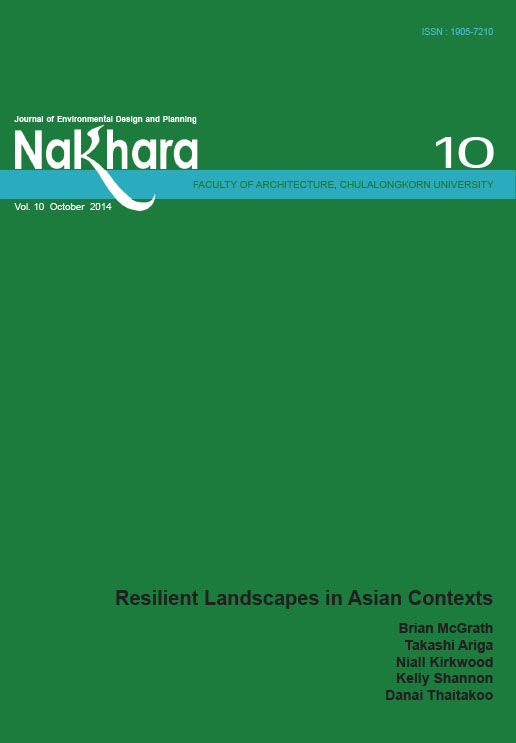Amphibian Identity? Waterspatial Resilience of Khlong in Bangkok
Main Article Content
Abstract
More than 1.100 khlong1 in Bangkok offer various opportunities for urban development. Over 2.200
km still exist in the Province of Bangkok alone. Transport and living space on the water are found
only along certain parts of the system as khlong are predominantly used as open sewage, drainage and irrigation system. The particular urban structure creates complementary spaces that interface water with land. This article aims to understand the logic of structural elements of Bangkok in the Chao Phraya Delta of Thailand and to change the viewpoint, to look from the water to the city. To understand the research approach better the water space, consisting of the canal and the natural or planned fl ooded adjacent spaces, is disentangled and reconnected to the built landscape.
Definitions are refined for a clearer understanding of terms, especially because water is addressed
interdisciplinary and hence needs a common language. Water spatial resilience is important because spatial variations infl uence a system’s resilience. With the aim to identify the transformability of the spatial structure, waterspace characteristics are recognized. These characteristics are derived from studying complex adaptive systems, networks, the resilience-concepts, and innate properties of waterways, especially in the Chao Phraya Delta. The framework condensing urban development principles from an amphibian perspective is based on the adoption of space in Bangkok. Amphibious architecture, water-space urban design and wateruse planning evolving from a water-space-perspective can lead to an amphibian living space.

